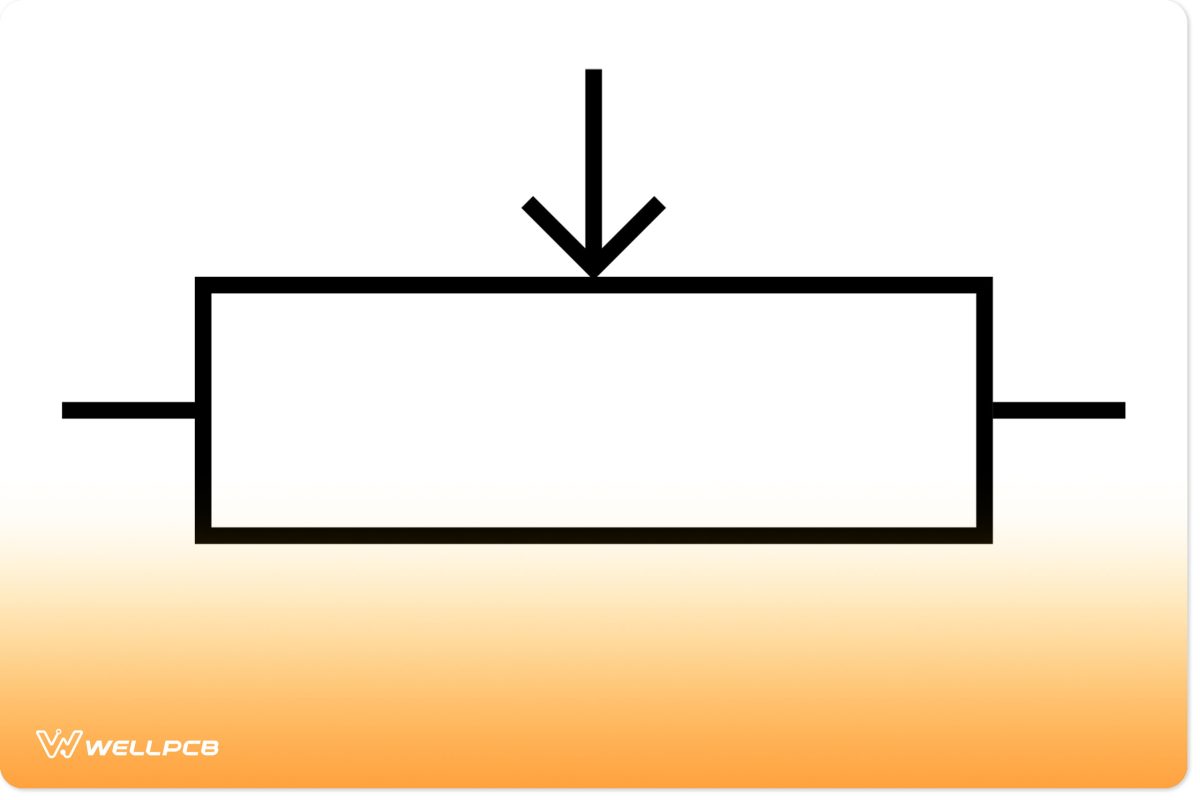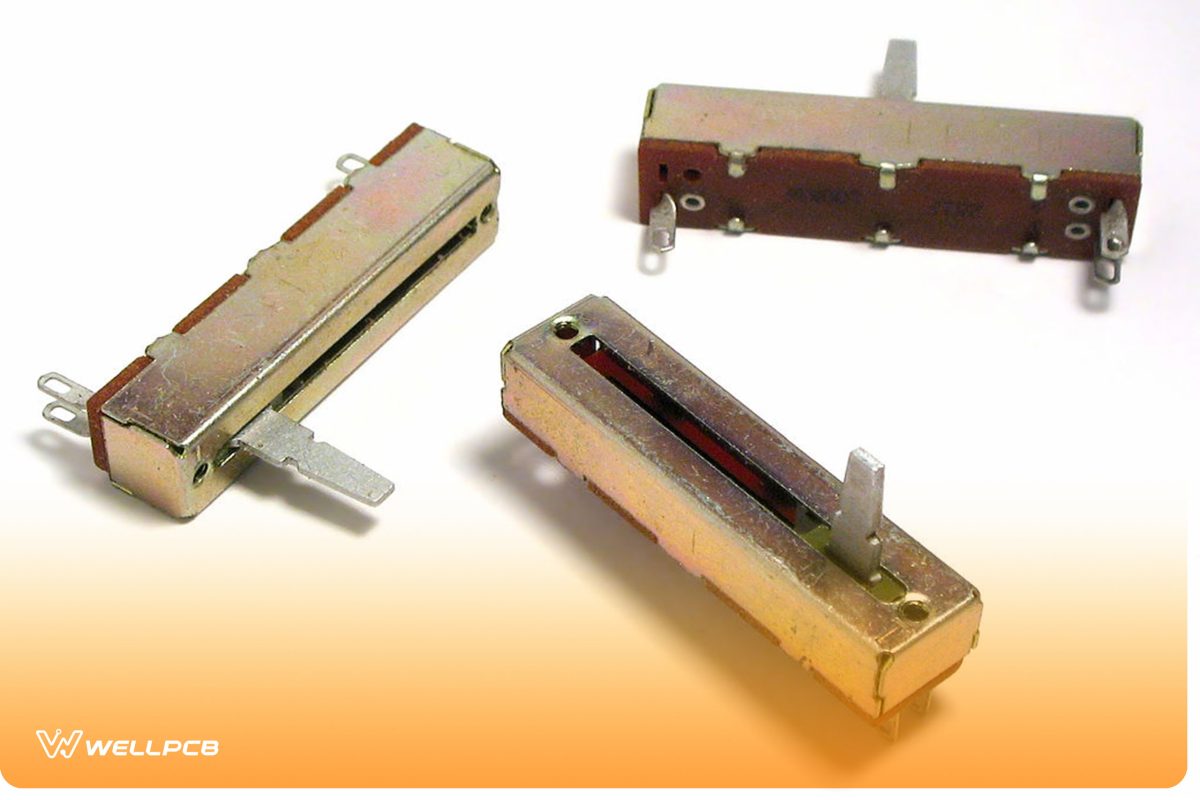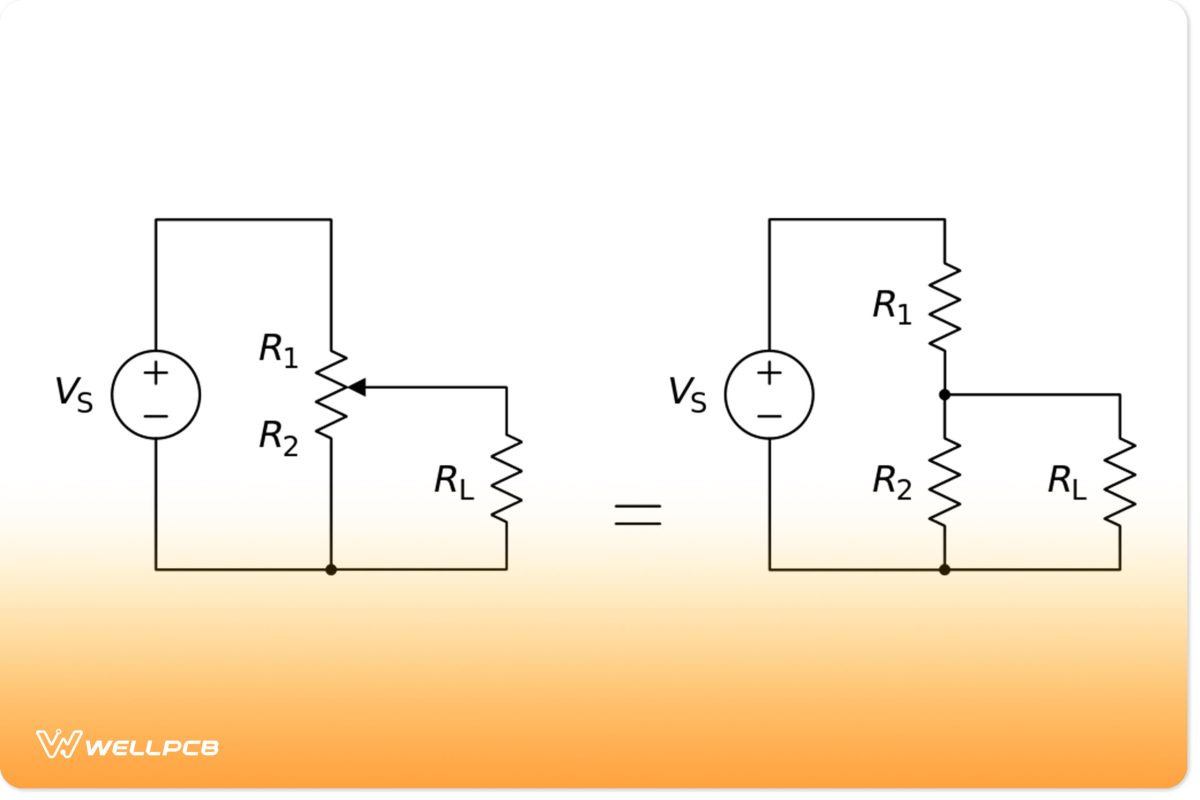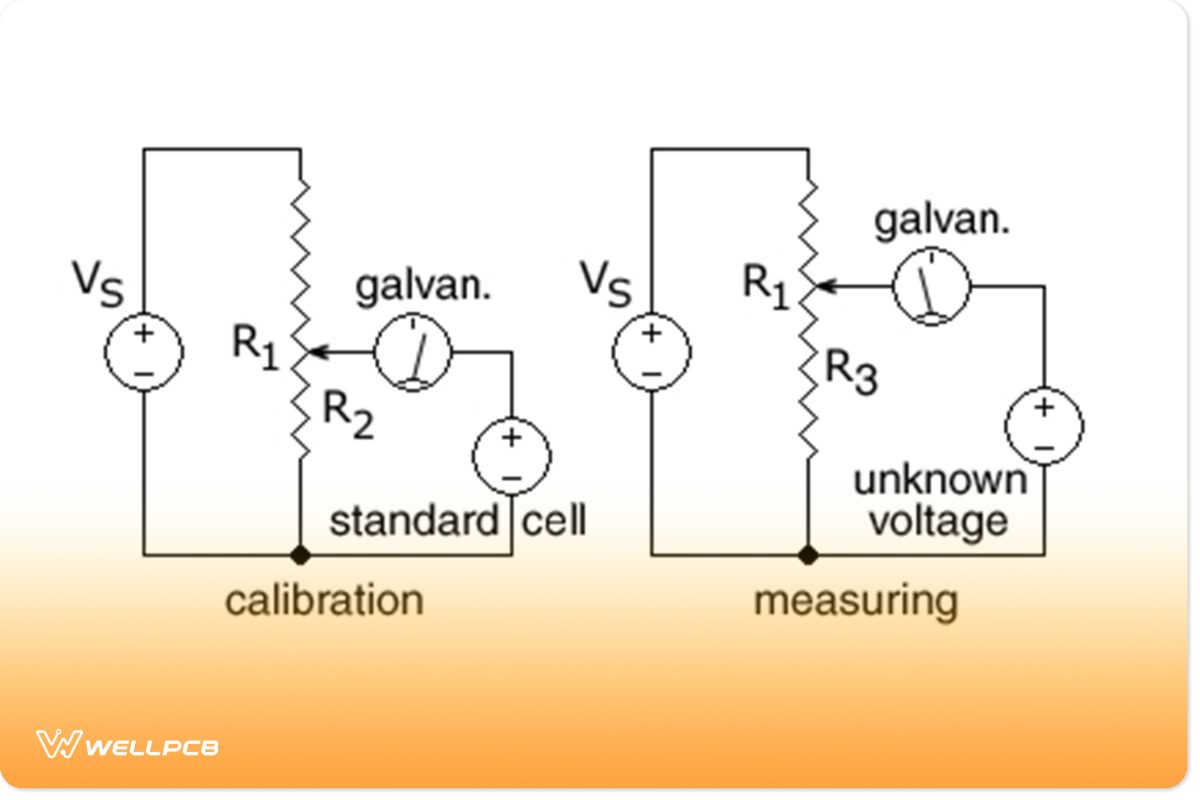Contents
Brief Introduction to Potentiometer( POT)

(Circuit symbol of a potentiometer)
A potentiometer (also known as a pot or potmeter) consists of a three-terminal variable resistor whose resistance is manually varied to control the flow of electric current. A voltage divider achieves an adjustable output voltage.
Typically, a normal Potentiometer has three terminals, which include a resistor, a wiper, and a shaft. Resistive materials make Potentiometers, and you create these materials by cementing ceramic and metal particles, such as carbon composition, together before combining them to create Cermet.
Further, two parts make up each Potentiometer: a sliding section and a non-sliding section. Then, the wiper refers to the sliding contact of the Potentiometer that moves with the wire. Wipers can move either in a rotational or a translatory motion, or both.
Your resistive element, the track, has two terminals connected to it, while your third relates to the sliding contact. This terminal controls a variable resistor. Both angled and flat resistors are suitable. When you use angle designs, wipers are linear but rotary when using flat designs.
The resistance can change from zero to a defined upper limit by sliding the contact over a resistive strip on your electrical devices. According to Ohm’s law, when the resistance changes, the current through the circuit changes. This process, in turn, changes the voltage across the resistive material.
Different Types of Potentiometers

(Slide Potentiometers)
Based on the resistive strip’s geometry, there are two types of potentiometers:
- Rotary Potentiometer
- Linear Potentiometer
One has an arc-shaped resistive strip, whereas the other has a wiper that slides linearly over that strip.
Rotary Potentiometer
You primarily use a rotating potentiometer to adjust the supply voltage to a particular portion of an electronic circuit. A radio transistor’s volume controller is an example of a rotary potentiometer that regulates the power supply for the amplifier in audio equipment using its rotary knob.
You place a semi-circular semi-resistive resistance between the two terminal contacts of the Potentiometer. Next, a sliding contact attached to a rotary knob connects the device’s center pin to the resistance. Rotating the knob moves the sliding contact on the semi-circular resistance. Afterward, you obtain an outside voltage between the sliding contact and an end contact of the resistance. Battery chargers for substations use a pot to adjust the charging voltage of your power application.
Commonly, Potentiometers of the rotary type help control voltage smoothly, but there are many other uses for them.
Linear Potentiometer
Linear potentiometers are identical to rotary potentiometers, but the sliding contact moves linearly rather than rotary. They are also known as Audio Taper. A straight resistor connects across the voltage source at two ends. And, through a track attached to the resistor, a sliding contact attaches to the resistor. One terminal of the sliding contact connects to the input circuit, while the other terminal of the resistor connects to the output circuit.
In our daily lives, we use this type of Potentiometer to measure the voltage across a branch of a circuit, measure the internal resistance of a battery cell, compare a battery cell with a standard cell, and finally, provide balance in music and sound mixing systems.
Potentiometer Circuit work principle

(A potentiometer with resistive elements showing equivalent fixed resistors.)
By connecting its three terminals to an electrical circuit, a potentiometer controls its output. One of the terminals will connect to the wiper, and then two of the fixed terminals will connect to both ends of the resistive elements when their sliding contacts move consistent resistance forms. Potentiometers apply a voltage across the resistance of a resistor. So, you can calculate the output voltage by looking at the voltage drop between the sliding and fixed contacts.
Again, it is possible to use potentiometers as voltage dividers. Typically, all three pins connect to the Potentiometer to act as a voltage divider. Thus, when you use the Potentiometer as a voltage divider, the wiper position determines the output voltage.
The characteristics of the Potentiometer
The main characteristics of Potentiometers are as follows:
TAPER
A potentiometer taper is a relationship between the position of the sliding contact and its resistance. Moreover, the relationship between relative position and resistance ratio is usually linear in the vast majority of variable resistors. For example, the variable resistance is half its full-scale value when the sliding contact is at the middle position. The use of non-linear logarithmic tapers is common in everyday specific active devices, including audio volume control.
Marking Codes
You should consider a potentiometer’s maximum resistance when choosing one. Manufacturers use marking codes since they help indicate the maximum resistance on your ohm resistor. For example, a pot marked with a resistance of 100K means its maximum limit is a hundred Ohms.
Resolution
We can only change the resistance of the pot to a certain extent as we vary the resistance. A pot’s resolution is its ability to change resistance. Therefore, when we say the pot resistance is 20k Ohms, with a resolution of 0.5, the minimum change in resistance will be 0.5Ω, and the values that we get for the smallest changes will be 0.5,1.5,2 Ohms.
Hop-On Hop-Off Resistance
As we already know, there are three terminals to a pot. And, there is a metal on each terminal with low resistance. As a result, whenever the wiper enters or exits this region, there will be a sudden change in resistance. This is the hop-on and hop-off resistance.
Application of Potentiometers

(A potentiometer being calibrated, then measuring an unknown voltage. R1 is the resistance of the entire resistance wire.)
A potentiometer essentially works as an adjustable voltage divider. However, one uses it in many industries and applications too. In this list, we categorize some of the applications of potentiometers:
Potentiometers as Controllers:
- First, in applications where there is a requirement for manual input voltage variation, potentiometers can function as user-controlled input devices. It is common for throttle pedals, for example, to be dual-gang pots to increase the system’s redundancy. We also use joysticks as user-controlled inputs in machines.
- In audio systems. It is also common for volume control devices to use potentiometers with logarithmic tapers due to our hearing’s logarithmic response to sound pressure. This is a Logarithmic Taper Potentiometer. The transition from a loud to a soft sound (and vice versa) will be smoother with a logarithmic taper potentiometer. Motorized pots with a logarithmic taper mainly handle this application.
Potentiometers as measuring devices:
- Potentiometers are standard instruments to measure voltage, and their original purpose was to measure and control the supply voltage.
- Additionally, you can use them as transducers in measuring distances and angles since they convert the wiper’s position into electrical output.
Potentiometers as tuners and calibrators:
- Lastly, it is possible to use potentiometers in a circuit to get the desired output. It is also common to mount a preset pot on a circuit board when calibrating a device. Most of these remain on the circuit board permanently.
Summarize
To conclude, a Potentiometer features in several different active devices that we use daily. There are different types of potentiometers, and they typically have three terminals, which include a resistor, a wiper and a shaft.
Please feel free to contact us if you have any questions regarding Potentiometers or anything else related to this subject. Our team is available to answer any questions you may have.





